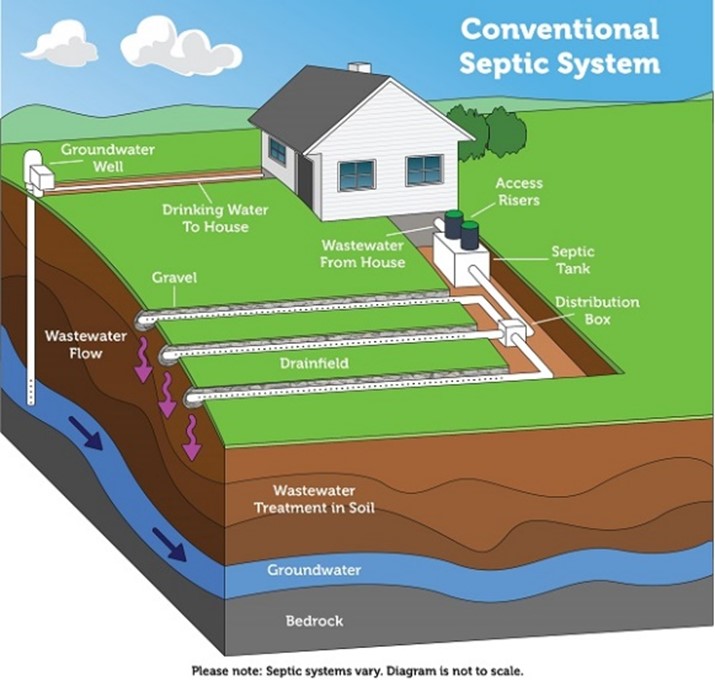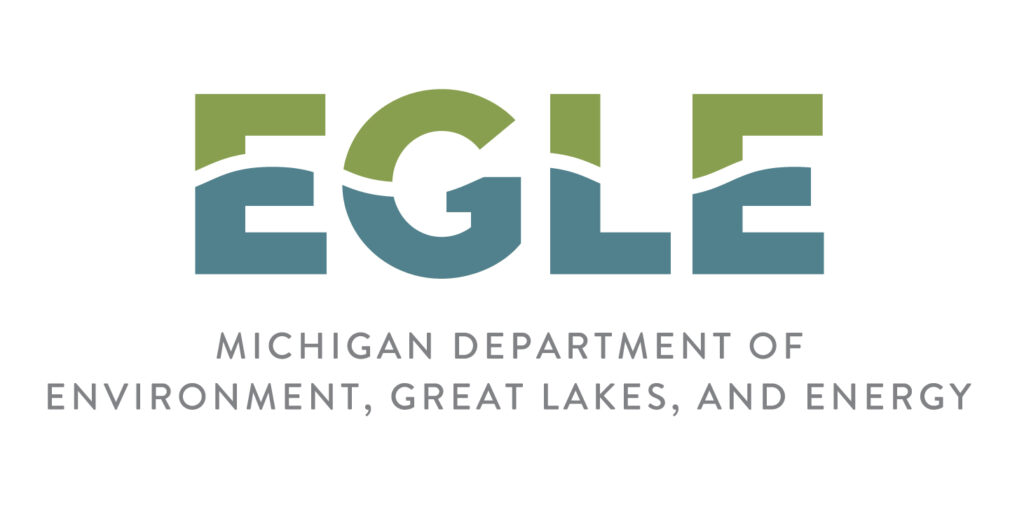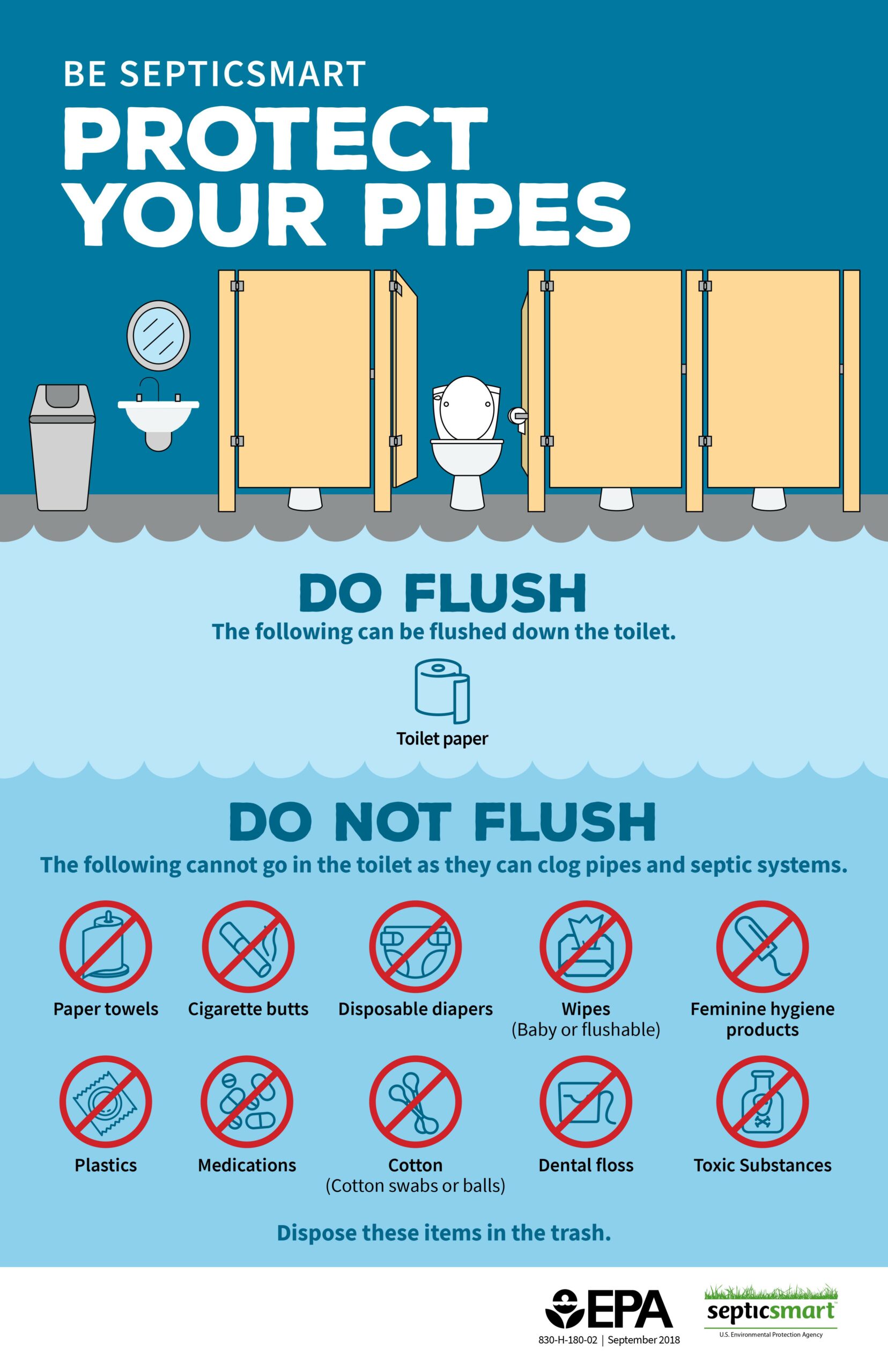Why do we Maintain our Septic Systems?
Financial Impact
It costs less to maintain a septic [$250 – $500 every 3 to 5 years] than it does to repair or replace a broken septic system [between $5,000 – $15,000 or more depending on the complexity of the system][1].
A septic system in need of repair or replacement lowers property value. Having a malfunctioning septic system can also be a legal liability when selling your home[2].
[1] “Why Maintain Your Septic System | US EPA – U.S. Environmental …,” Why maintain your septic system, August 7, 2023, https://www.epa.gov/septic/why-maintain-your-septic-system.
[2] Andrew Blodgett, “Selling Your Home? Beware of Potential Liability When Filling out Your Seller’s Disclosure Statement.,” Northern Michigan Property Law, February 5, 2021, https://www.northernmichiganpropertylaw.com/blog/2021/2/5/selling-your-home-beware-of-potential-liability-when-filling-out-your-sellers-disclosure-statement.
Health and Safety
Septic systems in need of repair or replacement do not fully treat the wastewater before introducing it into the groundwater. Wastewater contains bacteria, viruses, excess nutrients (nitrogen and phosphorus), and pharmaceuticals. This improperly treated wastewater will go on to contaminate groundwater, streams, and rivers[1].
Contaminated groundwater from faulty septic systems can find its way into wells, causing a hazard to human health to households and neighborhoods[2]. Properly maintained septic systems will remove most of the bacteria, viruses, and excess nutrients before the wastewater reaches the water table[3].
[1] “Septic Regulation Success Stories in Northern Michigan,” Tip of the Mitt Watershed Council, September 2022, https://watershedcouncil.org/wp-content/uploads/2023/09/2022-Septic-Success-Stories-Of-Northern-Michigan.pdf.
[2] “Septic Systems and Drinking Water | US EPA,” Septic Systems and Drinking Water, September 8, 2023, https://www.epa.gov/septic/septic-systems-and-drinking-water.
[3] To learn more about keeping your well water safe, visit https://www.epa.gov/privatewells/protect-your-homes-water – welltestanchor.
Environmental Impact
Households with failing septic systems in the Pine River watershed will have this contaminated ground water flow into the Pine River. Additionally, there are many households in our area that have septic systems directly connected to the Pine River. Besides agricultural runoff, faulty septic systems are one of the largest contributing factors of the excess nutrients in the Pine River. These excess nutrients and polluted sedimentation are what cause the Pine River’s eutrophication – the increase in nutrients which leads to excess plant growth and algae blooms. This reduces the oxygen levels for fish and other animals.
Groundwater is estimated to be 40% of the source of a river’s water. In periods of no rainfall, this number can increase up to 100%[1]. Therefore, groundwater contamination from faulty septic systems directly impacts the health of the Pine River.
[1] “Groundwater and River Flow,” American Ground Water Trust, October 16, 2012, https://agwt.org/content/groundwater-and-river-flow.
How do we Maintain our Septic Systems?
The homeowner, property owner or homeowner’s association is responsible for the maintenance of your septic system.
Inspections
Have your septic system inspected every 3 years by a professional. If you have an alternative system with mechanical and electrical components, you should have it inspected once per year[1]. The inspector will check for leaks and sludge layers in the septic tank. The inspector will also tell you when you should have your septic tank pumped (approximately every 3-5 years).
[1] How to care for your septic system | US EPA, June 21, 2023, https://www.epa.gov/septic/how-care-your-septic-system.
Avoiding Hazards
Driving/parking over your septic system
- Driving over the septic system’s drain field will compact the soil, restricting the function of the system.
- Parking over the septic tank could collapse the tank.
Landscape and architecture
- Do not plant trees near the septic system to avoid roots in the system.
- Keep other drainage systems away from the drain field such as sump pumps and roof drains.
- Too much water in the drain field slows or stops the wastewater treatment process.
Toilet, sink, and shower waste
For most homes, sink and shower grey water goes into the septic system. Because of this, you want to avoid putting certain items down your sink or shower drain.
Do not flush anything other than water, waste, and septic-safe toilet paper down.

Avoid putting down the drain or flushing: wipes (not even “flushable” wipes), tissues, paper towels, feminine hygiene products, diapers, condoms, and pharmaceuticals, oil, grease, coffee grounds, paint and stains, pesticides, and antifreeze.
Be Aware of your Water Usage
Water from leaky faucets can add up to gallons of excess water entering the drainage system each day. If you have one faucet that leaks one drop of water every 5 seconds, 1.73 gallons excess water will enter your septic system[1].
A running toilet can add up to 2,800 gallons of water running into your septic system every day[2].
[1] “Water Info,” DrinkTap.org, accessed November 27, 2023, https://drinktap.org/Water-Info/Water-Conservation/Drip-Calculator.
[2] Jared Dickman, “How Many Gallons Does a Running Toilet Use and How to Fix the Problem,” HomeNetGuide, November 7, 2023, https://homenetguide.com/how-many-gallons-does-a-running-toilet-use/.
Causes of a Failing Septic System
Your septic system can fail for a variety of reasons. The most common are physical damage, poor construction, lack of maintenance, and generating more wastewater than the system was designed to handle. To reduce the risk of failure, households should be aware of and avoid hazardous septic practices (listed above under “How do we Maintain our Septic Systems”) and have routine inspections every 3 years.
Warning Signs of a Failing Septic System
The most common signs of a failing septic system are[1]:
- Sinks, showers, and bathtubs drain slowly.
- Sinks and toilets back up with wastewater.
- Drains and pipes make a gurgling sound when draining.
- There is standing water near the septic tank or drain field.
- The grass over your drain field or septic system is growing faster, lusher, and greener than other sections of your yard.
- You smell sewage around the septic tank or drain field.
- High levels of nitrates and coliform bacteria appear after testing your well-water.
- You have a straight pipe discharging untreated wastewater above ground.
- You notice algae blooms in bodies of water around your property.
If you notice these symptoms, contact help from the resources below.
[1] Resolving septic system malfunctions | US EPA, May 2, 2023, https://www.epa.gov/septic/resolving-septic-system-malfunctions.
How a Conventional Wastewater Treatment System Works

This diagram shows the typical septic system operates for a single-family home or small business[1].
Water from the house pipes into a septic tank. The septic tank holds wastewater, where solids settle to the bottom of the tank.
The wastewater leaves the tank and enters the drain field. In the drain field, the wastewater is treated naturally by flowing through the soil.
The treated wastewater reenters the groundwater. The groundwater is then picked up by your well to use as drinking water for your home. This groundwater also enters nearby bodies of water, such as nearby streams, rivers, and lakes.
[1] “Conventional Septic Systems,” Types of Septic Systems, August 7, 2023, https://www.epa.gov/septic/types-septic-systems.
Help and Community Resources
If you suspect that your septic system is failing, contact the Mid-Michigan District Health Department for assistance[1]. The Mid-Michigan District Health Department has three branches depending on your county.

Clinton County: 989-224-2195 (ext. 4)
Gratiot County: 989-875-3681 (ext. 4)
Montcalm County: 989-831-5237 (ext. 4)
Visit www.mmdhd.org/contact to see how to get in touch with your local MMDHD.
[1] “SepticSmart,” MMDHD District Health Department | July 21, 2023, https://www.mmdhd.org/environmental-services/septic/septic-smart/.
Local Septic Companies
Akers Waste Removal – For Septic Pumping and Maintenance
6288 S. Bagley Rd. Ashley, MI 48806
1 (989) 838-4104
Security Septic – For Septic Repair, Installation, and Pumping
2000 E. Superior St. Alma, MI 48801
1 (989) 463-2212
securityseptic.com
Financial Assistance for Low Income Households
Homeowner Repair Grants and Loans
United States Department of Agriculture (USDA): Section 504 Home Repair Program
- Loans Available for Low Income Households with the homeowner under the age of 62.
- Grants are Available for Low Income Households with the homeowner age 62 or older.
- https://www.rd.usda.gov/programs-services/single-family-housing-repair-loans-grants/mi
Michigan Department of Health and Human Services (MDHHS): State Emergency Relief[1]
- Application available through MI Bridges
- Funding of up to $1,500 for Septic Repairs
- https://newmibridges.michigan.gov/s/isd-landing-page?language=en_US
EightCap Community Service Emergency Assistance
- Applications are for emergency assistance only, and acceptance and funding amount depends on funding.
- For Gratiot, Ionia, Montcalm, and Isabella Counties
- https://8cap.org/community-service/
Poverty Improvement Program (PIP)
- Contact MI State Housing Development (MSHDA) and ask about homeowner repair loans through the PIP program.
- (517) 335-9885
[1] “Home Repairs”, Michigan Department of Health and Human Services | https://www.michigan.gov/mdhhs/assistance-programs/emergency-relief/home-repairs
Organizations you can contact for more financial assistance[1][2]:
MI State Housing Development (MSHDA) | (517) 335-9885
Habitat for Humanity – Michigan | (517) 485-1006
USDA Rural Development – State of Michigan Office | (517) 324-5210
EightCAP, INC | (866) 754-9315 | https://8cap.org/community-service/
[1] “Michigan Homeowner Repair and Rehabilitation Assistance”, U.S. Department of Housing and Urban Development | https://www.hud.gov/states/michigan/homeownership/repair_rehab
[2] “Single-Family Home Repair Programs,” Michigan Resource Guide | January, 2022 | single-family-home-repair-programs-resource-guide.pdf (miplace.org)
Additional information for septic system education, sources, and acknowledgements.
For more information about Safe Septic Practices, visit www.epa.gov/septic.
Interested in obtaining additional septic system educational materials? Federal “SepticSmart” educational materials are available for free distribution through the Environmental Protection Agency at https://www.epa.gov/septic/septicsmart-education-materials.
The information provided was prepared and distributed by Healthy Pine River, a 501(c)(3) not-for-profit organization dedicated to improving the conditions of the Pine River. Please email questions and comments to healthypineriver@gmail.com.

This project has been funded wholly or in part through the Michigan Department of Environment, Great Lakes, and Energy’s Nonpoint Source Program using Watershed Council Support funds. The contents of the document do not necessarily reflect the views and policies of the Department of Environment, Great Lakes, and Energy, nor does the mention of trade names or commercial products constitute endorsement or recommendation for use.
Sources and Links
Blodgett, Andrew. “Selling Your Home? Beware of Potential Liability When Filling out Your Seller’s Disclosure Statement.” Northern Michigan Property Law, February 5, 2021. https://www.northernmichiganpropertylaw.com/blog/2021/2/5/selling-your-home-beware-of-potential-liability-when-filling-out-your-sellers-disclosure-statement.
“Conventional Septic Systems.” Types of Septic Systems, August 7, 2023. https://www.epa.gov/septic/types-septic-systems.
Dickman, Jared. “How Many Gallons Does a Running Toilet Use and How to Fix the Problem.” HomeNetGuide, November 7, 2023. https://homenetguide.com/how-many-gallons-does-a-running-toilet-use/.
“Groundwater and River Flow.” American Ground Water Trust, October 16, 2012. https://agwt.org/content/groundwater-and-river-flow.
“Home Repairs”, Michigan Department of Health and Human Services, https://www.michigan.gov/mdhhs/assistance-programs/emergency-relief/home-repairs
How to care for your septic system | US EPA, June 21, 2023. https://www.epa.gov/septic/how-care-your-septic-system.
“Michigan Homeowner Repair and Rehabilitation Assistance”, U.S. Department of Housing and Urban Development https://www.hud.gov/states/michigan/homeownership/repair_rehab
Resolving septic system malfunctions | US EPA, May 2, 2023. https://www.epa.gov/septic/resolving-septic-system-malfunctions.
“Septic Regulation Success Stories in Northern Michigan.” Tip of the Mitt Watershed Council, September 2022. https://watershedcouncil.org/wp-content/uploads/2023/09/2022-Septic-Success-Stories-Of-Northern-Michigan.pdf.
“Septic Systems and Drinking Water | US EPA.” Septic Systems and Drinking Water, September 8, 2023. https://www.epa.gov/septic/septic-systems-and-drinking-water.
“SepticSmart.” MMDHD District Health Department |, July 21, 2023. https://www.mmdhd.org/environmental-services/septic/septic-smart/.
“Single-Family Home Repair Programs,” Michigan Resource Guide, January, 2022. single-family-home-repair-programs-resource-guide.pdf (miplace.org)
“Water Info.” DrinkTap.org. Accessed November 27, 2023. https://drinktap.org/Water-Info/Water-Conservation/Drip-Calculator.
“Why Maintain Your Septic System | US EPA – U.S. Environmental …” Why maintain your septic system, August 7, 2023. https://www.epa.gov/septic/why-maintain-your-septic-system.
